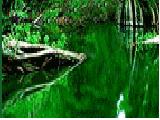
![]() World
News World
Top Stories Web
Search Web
Images
Search Web
Groups Search Web
Catalogs Web
Directory
News Search
World
News World
Top Stories Web
Search Web
Images
Search Web
Groups Search Web
Catalogs Web
Directory
News Search
|
|
LatinAmerica
Tools
|
Ancient cultures -Archeological - Protected natural areas -Cultural and Natural Heritage -Natural Park |
|
|
|
|
|
|
||||||||
|
 |
||||||||||||||||||||||||||||||||||||||||||||||||||||||||||||
|
BOLIVIA SECTIONS INDEX (55) |
||||||||||||||||||||||||||||||||||||||||||||||||||||||||||||
|
|
||||||||||||||||||||||||||||||||||||||||||||||||||||||||||||
|
|
||||||||||||||||||||||||||||||||||||||||||||||||||||||||||||
|
|
||||||||||||||||||||||||||||||||||||||||||||||||||||||||||||
|
|
||||||||||||||||||||||||||||||||||||||||||||||||||||||||||||
|
Ecoportal Panamerica - Latinamerica Key facts (20 Sections) |
||||||||||||||||||||||||||||||||||||||||||||||||||||||||||||
|
Ecoportal Panamerica - International Travel & Tourism Key Facts |
||||||||||||||||||||||||||||||||||||||||||||||||||||||||||||
|
|
||||||||||||||||||||||||||||||||||||||||||||||||||||||||||||
|
|
||||||||||||||||||||||||||||||||||||||||||||||||||||||||||||
|
||||||||||||||||||||||||||||||||||||||||||||||||||||||||||||
International





